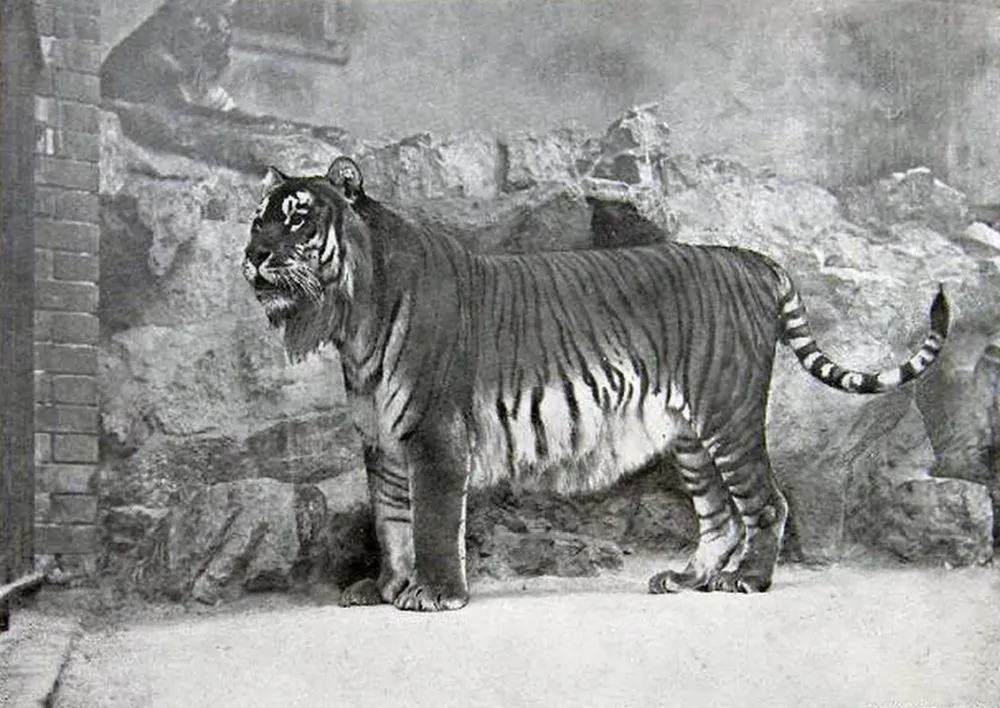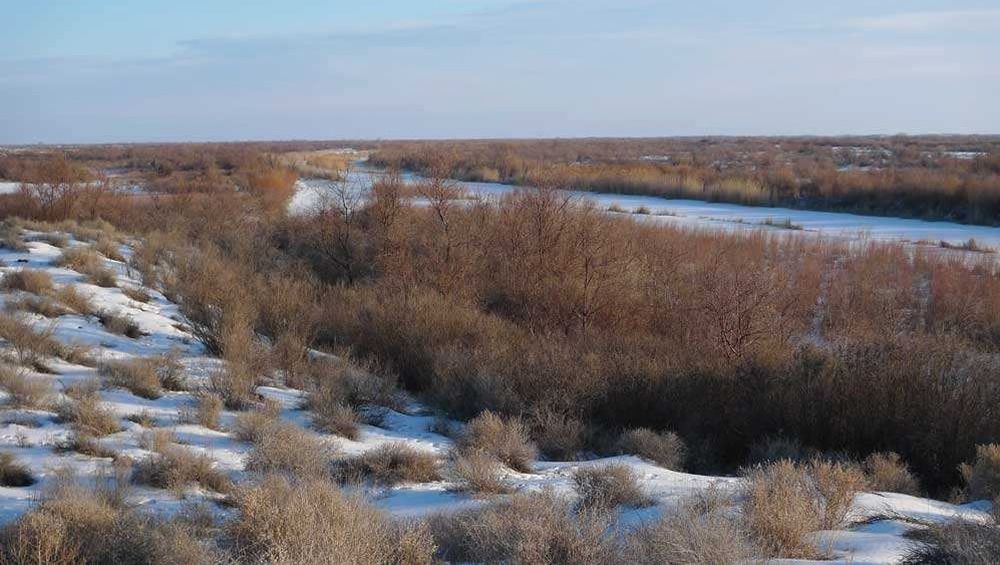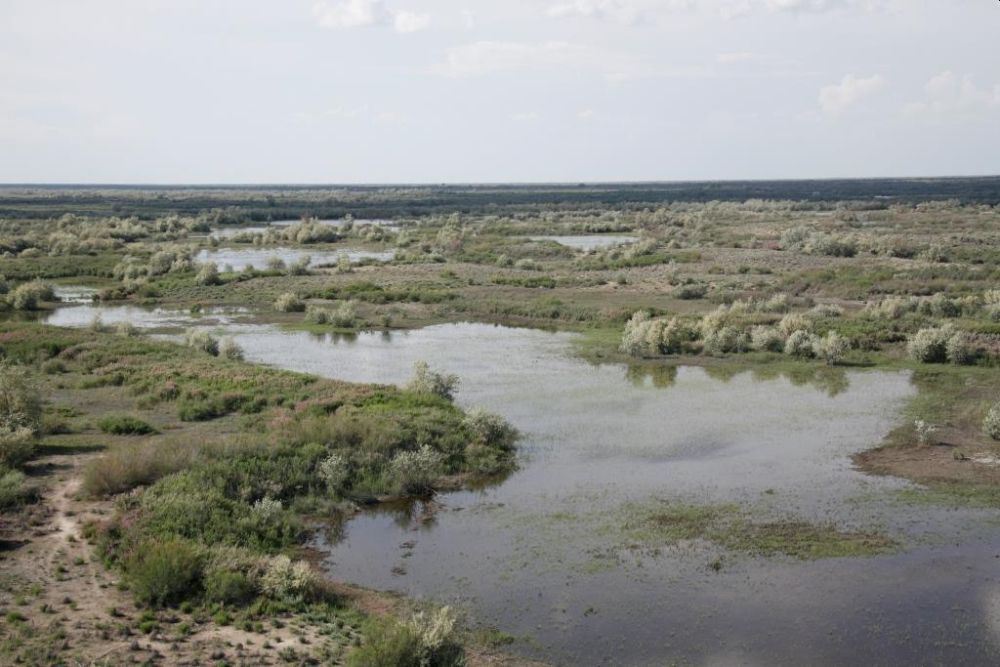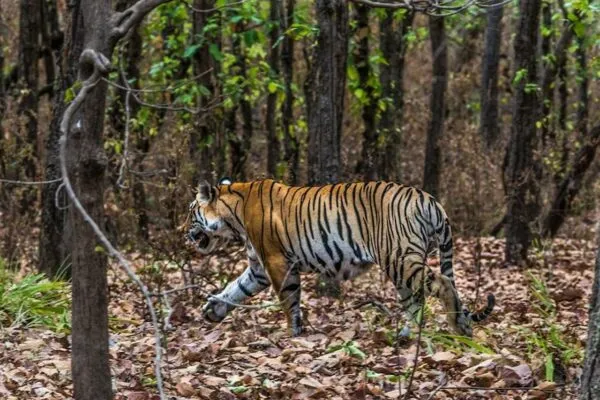Could the Caspian Tiger be Brought Back From Extinction?
The majestic Caspian Tigers once proudly roamed the lands of Central Asia, but have gone extinct half a century ago. These big cats strayed through most of the Northern provinces of Iran and on the border of former Soviet country Tajikistan.
In the late 19th century, the Russian government instructed its army to exterminate all these tigers as part of an agricultural conversion project across Central Asia. The last stronghold of Caspian Tigers was a reserve in Tajikistan: Tigrovaya Balka “tiger former river channel.” The last tiger in this reserve was seen back in 1958.
Characteristics of Caspian Tigers
The Caspian Tiger was a Panthera tigris tigris population. Johann Karl Wilhelm Illiger proposed a scientific name for the tigers in the Caspian Sea area in 1815 – Felis Virgata. Thence, the animal was distinctly recognized as a different subspecies, Panthera tigris virgata.
The main background color of the Caspian Tiger’s fur varied and was generally brighter and more uniform than that of the Siberian Tiger. The stripes were tapered, fuller and more closely set than those of tigers from Manchuria; and were a mixture of brown and cinnamon shades. They also had a hint of a mane.

A captive Caspian tiger at the Berlin Zoo in 1899 | Image: Wikipedia
Pure black patterns were visible on the head, neck, middle of the back, and at the tip of the tail. Angular patterns found at the base of the tail were less developed than the tigers in the Far Eastern region. The animal showed a sharp contrast between the summer and winter coast; the winter coats was paler, with less distinct patterns, while the summer coat had a similar density and hair length similar to the Bengal Tiger’s.
The Caspian Tiger was one of the largest cats that ever existed. Males had a body length of 270–295 cm and weighed 170–240 kg; females measured 240–260 cm in body length and weighed 85–135 kg.
Habitat of Caspian Tigers
More than 10,000 years ago, the tiger reigned over Eurasia, from the Sunda Islands of Indonesia to India to eastern Turkey and up north into Siberia. Caspian Tigers were native to eastern Turkey, northern Iran, Mesopotamia, the Caucasus around the Caspian Sea through central Asia to northern Afghanistan and Xinjiang in western China.
They were dependent on water-located habitats – near river basins, lake edges and seashores. Caspian Tigers mostly dwelled around river basins and Tugai around them – the reedy and tangled forests.

Tugai provided habitat for Caspian Tigers in Central Asia | Image: Victor Lukarevskii, WWF-Russia
Tugai spans a transition from open waters to sand or mud banks, shoreline reeds, ringing shrubs and tangled forests. Stretching in green, snake-like bands through Central Asia, tugai was once widespread in the region.
They hunted ungulates in their dwelling regions, mostly Bactrian deer, roe deer and wild boars. They had a relatively high reproductive rate and were able to change their hunting techniques depending on the prey and habitat.
They have been described as “flexible species which can adapt to a wide range of habitat and climatic conditions, from the tropical regions of Asia to the snow-clad Siberia.”
Extinction of the Big Cat
While environmental changes and human intrusion has driven some of its subspecies – Balinese and Javan tigers to extinction, the extinction of Caspian Tigers is the doing of humankind. Excessive hunting, poaching, habitat fragmentation, food shortages, poisoning and trapping wiped out the majestic species off the face of the earth.
The decline in prey population, especially deer, was one of the determining factors in the extinction of the Caspian Tiger. When there was a shortage of deer, the tigers resorted to bushmeat, which had also become popular among humans as well, leading to conflicts and hence tiger migrations.
The demise of the big cat started with the Russian colonization of Turkestan during the late 19th century. Tigers were killed by large parties of sportsmen and military personnel, who also hunted tiger prey species such as wild boars and deer. The range of wild pigs witnessed a rapid decline between the middle of the 19th century and the 1930s owing to overhunting, natural disasters, and diseases.
The extensive reedy and tangled forests of the tiger habitat were increasingly converted to agricultural lands for planting cotton and other crops. The tiger population was already vulnerable due to the restricted nature of their distribution alongside watercourses within a large desert environment.
Then, the Russian Army was assigned with the task of exterminating the tiger populations in the forests of Amu-Darya and Piandi Rivers. High incentives were paid for tiger skins up to 1929. Soon, the meager population of Caspian Tigers was pushed off the edge in the void of extinction by the greed and selfishness of humankind.
Caspian Tiger is one of the three subspecies of Eurasian tigers to go extinct within the last century, the two others are the Bali Tiger and the Javan Tiger.
The Comeback Trail
Carlos Driscoll, World Wide Fund for Nature (WWF) Chair in Conservation Genetics at the Wildlife Institute of India said DNA evidence suggest that tiger-of-the-riverbanks could be alive.
While some say that the last Caspian Tiger was seen in 1958 in Tajikistan, a controversial claim suggests that the last Caspian Tiger was shot in Turkey in the 1970s. Some believe that the Siberian Tiger could be the Caspian Tiger.

Tugai along the Ili River Delta in Kazakhstan | Image: Hartmut Jungius, WWF
A 2009 study suggests that a common ancestor of the Caspian and Amur tigers (probably the Indo-Chinese tiger) expanded into Central Asia from China along the so-called Gansu Corridor (Hexi Corridor) between the Tibetan Plateau and the Cobi Desert. From there, tigers spread northeast into Siberia.
There has been found a close genetic kinship between Caspian and Amur tigers, which gives a ray of hope to the scientists to restore the lost cat population. Museums in Russia, Kazakhstan and Azerbaijan hold the key to bring the Caspian Tiger back to life. Collected long ago, these museums contain the specimen of Caspian Tigers.
Experts believe that Ili River Delta in Kazakhstan promises a suitable habitat for the reintroduction of the Caspian Tiger. If this project pans out, the world might see the majestic Caspian Tiger once again. However, there still remain many challenges in the path of Caspian Tiger’s comeback.


